DMM BSide ZT302
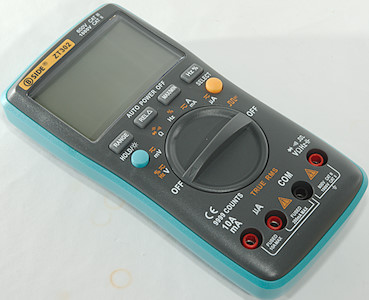
This is a cheap DMM with all common function.
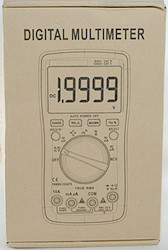

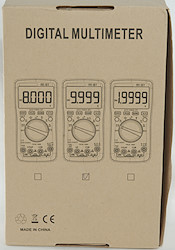

The meter arrived in a fairly anonymous multimeter box, but the checked illustration on the back matches the meter.
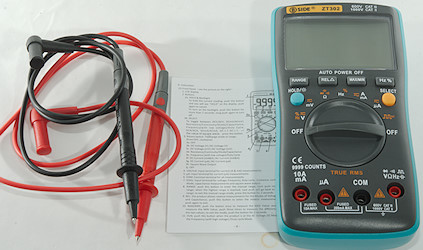
It included the DMM, a pair of probes and a manual.


The probes has removable tip covers, but is only rated for CAT-II, even with the covers on.

The plug is fully shrouded, but is slightly smaller than standard probe plug size.
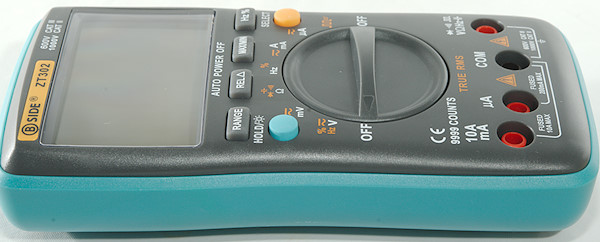

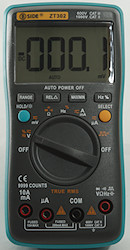
When using the tilting bale the meter is nearly stable enough to turn the switch, but the meter is very smooth and will easily slide around.
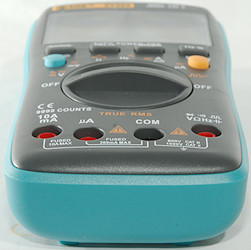
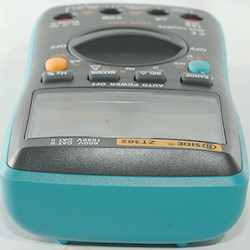

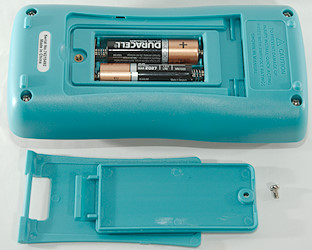
Display
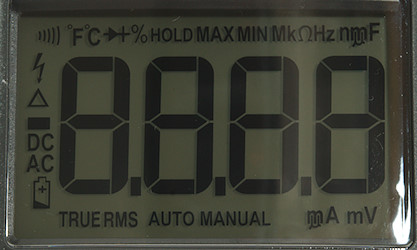
The above picture shows all the segments on the display, not all segments are used on this meter.
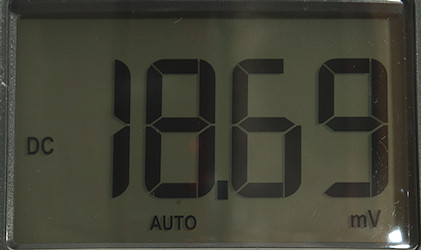
Typical display during usage, it will show the number and what measurement is selected.
The current software version has a bug, in manual ranging the manual annotation will disappear when using the range button.
Functions
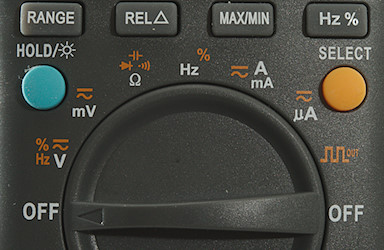
Buttons:
- Range: Will disable auto range and change range, hold down to activate auto range.
- Rel: Shows values relative to current value, will also select manual range. Press again to disable.
- Max/min: Starts recording maximum and minimum value (This mode will also select manual range), press to select between max/min.
- Hz %: Shows frequency and duty cycle in AC voltage ranges.
- Hold (Blue): Freezes the display, hold down for backlight.
- Select (Yellow): Select the ranges printed with yellow and steps frequency in square out.
Rotary switch:
- Off: Meter is turned off
- V: Show DC or AC voltage, using the HZ button to select frequency and duty cycle in AC.
- mV: Show DC or AC mV (Frequency cannot be selected here).
 : Resistance, continuity, diode and capacitance.
: Resistance, continuity, diode and capacitance.
- Hz %: Measure frequency and duty cycle (Use the Hz % button to select).
- A mA: High current range for AC and DC.
- uA: Low current range for AC and DC.
 : Square wave out, use yellow button to select 50, 100, 200, 300, 400, 500, 600, 700, 800, 900, 1000, 2000, 3000, 4000 and 5000 Hz.
: Square wave out, use yellow button to select 50, 100, 200, 300, 400, 500, 600, 700, 800, 900, 1000, 2000, 3000, 4000 and 5000 Hz.
- Off: Meter is turned off
Input
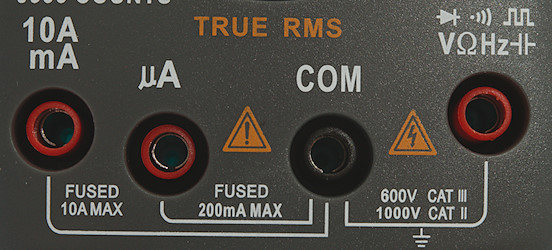
- 10A mA: High current, it is not stable when current gets near 10A
- uA: The lower current ranges.
- CON: The common terminal for all ranges.
- xxx: All other ranges.
Standard probes cannot be fully seated in the terminals, but they will make contact. Banana plugs fits perfectly.
Measurements
- Volt and frequency
- At 100mVrms input frequency range is from 1Hz to 5.2MHz
- At 1Vrms input frequency range can be stretched to 7.4MHz
- Max/min needs about 400ms to capture a voltage.
- 1 VAC is 5% down at 2.2kHz (RMS will not work at this frequency).
- Frequency counter and duty cycle needs a zero crossing
- Duty cycle works from 2% to above 99% at 100kHz with 1Vpp, precision is within 0.2 (Mostly 0.1).
- Input impedance is 10-11Mohm on DC and AC
- mV range is high impedance for DC and 10Mohm for AC, impedance drops above 1.8V to 3kohm
- Frequency input is 10Mohm up to about 1.5V, then it drops to 2kOhm
- Current
- A range will give audible alarm at 10A.
- A range cannot handle near 10A, shunt will heat up and reading will change significantly (1A).
- uAmA protected by a 0.2A/250V 5x20mm fuse
- A is protected a 10A/250V 5x20mm fuse.
- Current ranges are only rated for 36VDC and 25VAC
- Ohm, Continuity, diode and capacitance
- Ohm needs about 2.3s to measure 100ohm
- Ohm is 1.0V open and 0.36mA shorted
- Continuity is fast (About 20ms).
- Continuity beeps when resistance is below 50ohm.
- Continuity is 1.0V open and 0.36mA shorted
- Diode range uses 3.2V, max. display is 3.000V at 0.12mA, max. current is 1.6mA shorted
- 70000uF takes about 9 seconds to measure.
- The specifications says not to input voltage in these ranges.
- Miscellaneous
- Current consumption of meter is 1.7mA and 2mA in AC mode (9mA with backlight).
- Meter works down to 2.2V where it turns off, battery symbol show at 2.4V.
- Reading is stable with changing battery voltage.
- Backlight only works down to about 2.6V where it is fairly dim.
- The meter usual need a few display update to reach the final value.
- Viewing angle is good, except from the top.
- Display updates around 3 times/sec
- Backlight will automatic turn off in about 120 seconds.
- Will automatic turn power off in about 15 minutes.
- Standard probes cannot be pushed fully down.
- Weight is 249g without accessories, but with batteries.
- Size is 161 x 80 x 40mm.
- Probes
- Probe resistance 56mOhm for one (One probe was defective).
- Probe wire is soft and 65cm long.

A look at the capacitance measurement waveform.
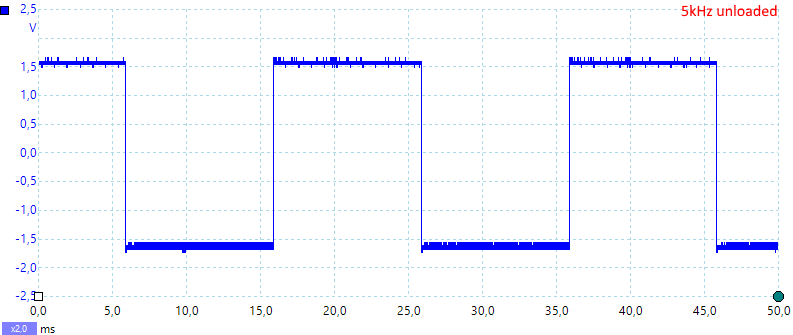
50Hz square wave

5Khz square wave
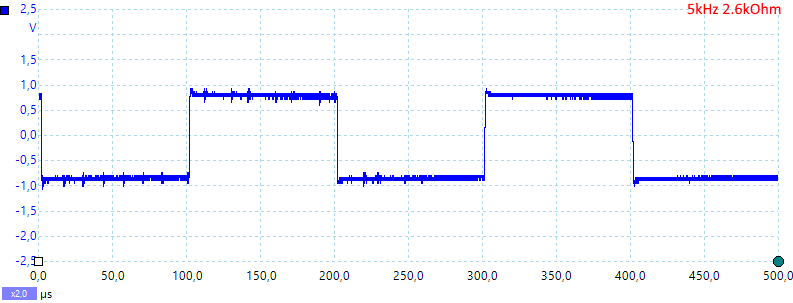
Loaded with 2.6kOhm gives half output, i.e. impedance is 2.6kOhm.
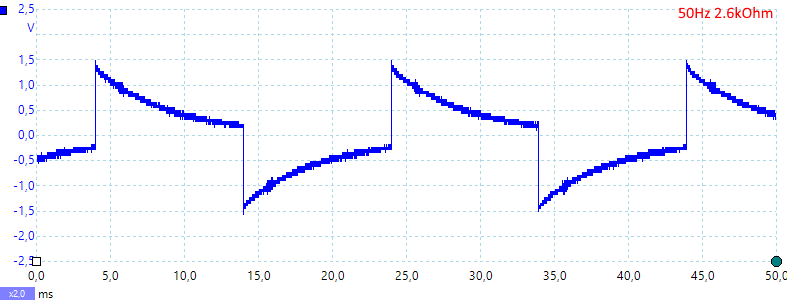
And it has a capacitor in the output.

Frequency input impedance.

The 10A range is not stable near full current (Technically this is a A range, not a 10A range).
Tear down
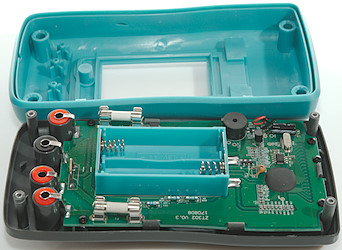
Four screws and the back could be removed with some difficulties.
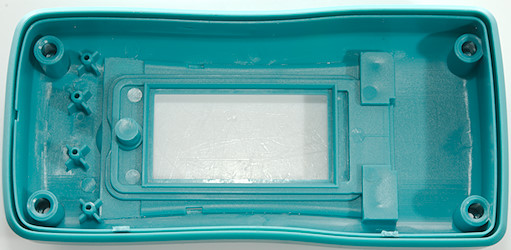
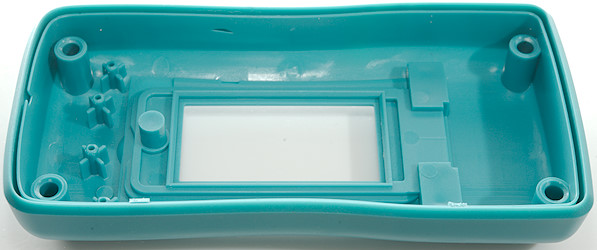
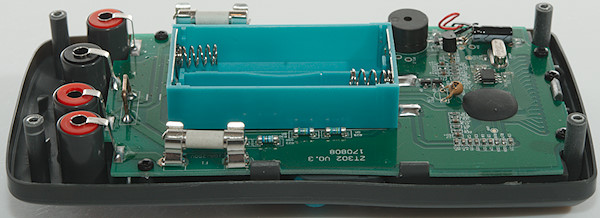
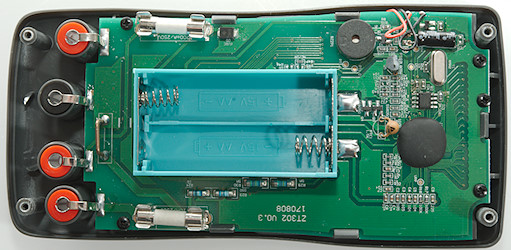
As usual the circuit board is made to fit in the box, there is also some clips to hold it in.
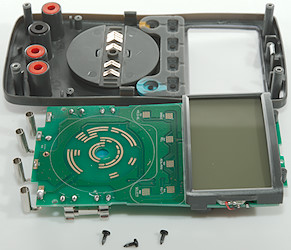
3 screws and I could remove it.
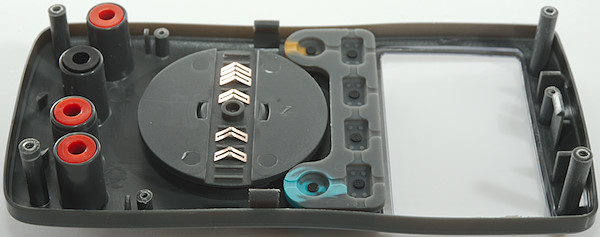
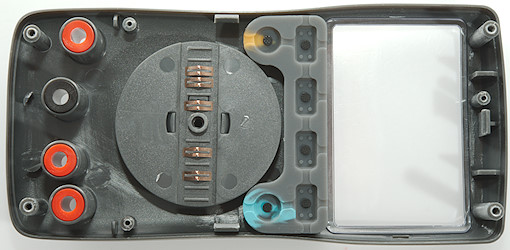
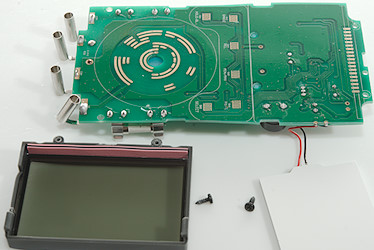
Two more screws and the display could be removed.

This side of the circuit board only contains the switch, button and display pads, no components here.
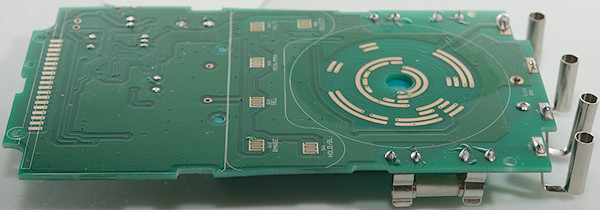
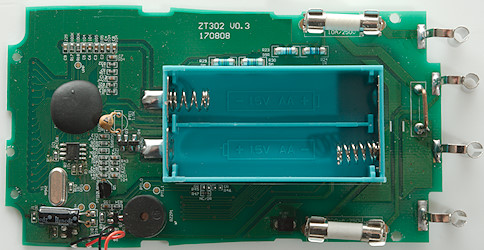
All electronic is on this side. The uA shunt (R23+R24: 99ohm+1ohm) with protection diode (D5) and the 200mA fuse. The voltage input with two resistors (R29, R30: 5Mohm+5Mohm). The ohm protection (PTC1, Q3, Q4). The reference (Q5: ICL8069). Transistors for switching buzzer (Q2) and backlight (Q1) on. The EEPROM (IC1: 24C02) and the multimeter IC as a COP.
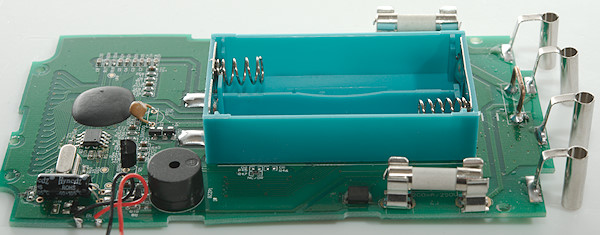
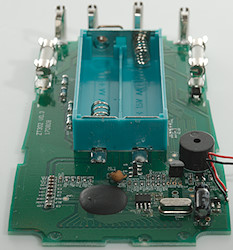
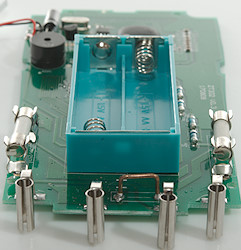
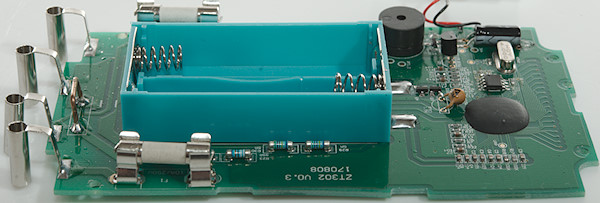
Conclusion
As usual I am very doubtful about the CAT rating, it must surview full voltage on the ampere input, but they are not rated for that, neither are the fuses.
The meter has many ranges but are missing a bit in the ampere (It has the resistor for the missing ranges), but due to the way this meter is designed it is ideal for measuring current in the 100mA to 1A range with very low burden voltage.
The meter can do min/max, test leds and the backlight do not turns off after 15 seconds.
It will call it acceptable DMM for hobby use, but keep it away from anything with mains voltage and lots of amps.
Notes
This meter exist with many different names on it and small variations in functions.
Check the Aneng AN8008 meter for a smaller version of this meter.
How do I review a DMM
More DMM reviews
 : Resistance, continuity, diode and capacitance.
: Resistance, continuity, diode and capacitance.
 : Square wave out, use yellow button to select 50, 100, 200, 300, 400, 500, 600, 700, 800, 900, 1000, 2000, 3000, 4000 and 5000 Hz.
: Square wave out, use yellow button to select 50, 100, 200, 300, 400, 500, 600, 700, 800, 900, 1000, 2000, 3000, 4000 and 5000 Hz.



















 : Resistance, continuity, diode and capacitance.
: Resistance, continuity, diode and capacitance.
 : Square wave out, use yellow button to select 50, 100, 200, 300, 400, 500, 600, 700, 800, 900, 1000, 2000, 3000, 4000 and 5000 Hz.
: Square wave out, use yellow button to select 50, 100, 200, 300, 400, 500, 600, 700, 800, 900, 1000, 2000, 3000, 4000 and 5000 Hz.























